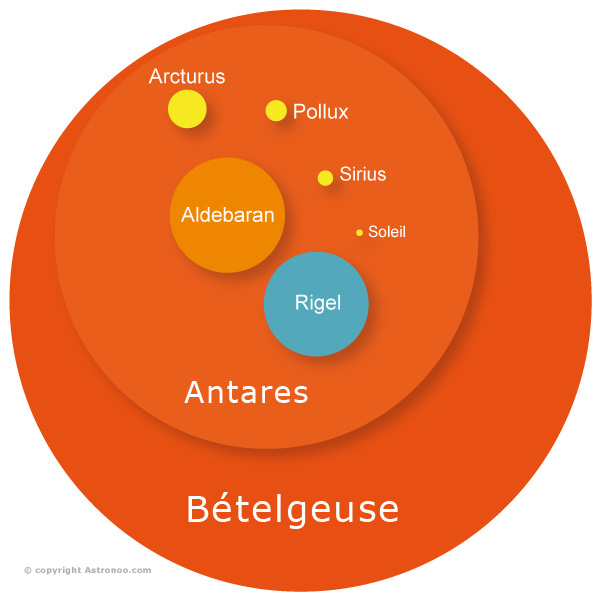
Image: Comparative sizes of some super giant stars like Antares, Betelgeuse, Rigel, Aldebaran and some white dwarfs like Arcturus, Pollux, Sirius or the Sun.
© astronoo.com
Stars are large balls of hot, bright gas that shine in the night sky. They are made up mainly of hydrogen and helium, the two most abundant gases in the universe.
Stars form from clouds of gas and dust in space. Gravity pulls gas and dust toward the center of the cloud, creating a dense area called a protostar.
As the protostar continues to build up, it becomes hotter and denser, until the hydrogen atoms begin to fuse together to form helium. This fusion creates an immense amount of energy that produces light and heat, making the star bright and hot.
Once a star is born, it begins to shine for millions or even billions of years. A star's lifespan depends on its size: smaller ones, like red dwarfs, can shine for trillions of years, while larger ones, like supergiants, only live for a few million years.
At the end of its life, a star can explode into a supernova or turn into a white dwarf or a black hole, but this depends on its mass and age.
So that's how stars work in a nutshell for kids!